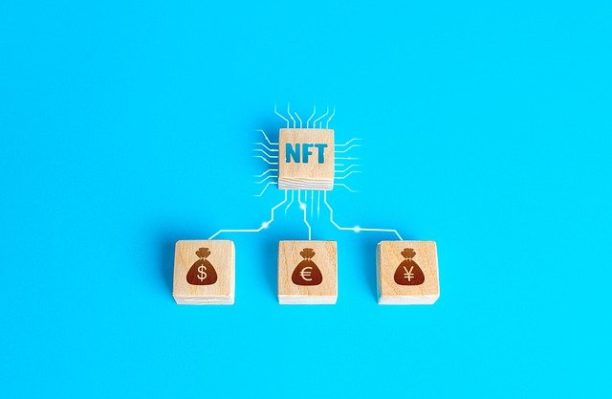The concept of fungibility has gained a lot of traction and relevance in recent years. Crypto markets are experiencing a boom in non-fungible tokens (NFTs), becoming more popular in the consumer sector. The blockchain sector continues to explore new possibilities, and the NFT sector is becoming a crucial part of it. In a short amount of time, NFTs have become a world phenomenon. People are becoming increasingly fascinated by technology.
Various industries, including sports, entertainment, and media, have entered the NFT space. NFTs have earned respectability in the industry by addressing copyright and intellectual property infringement issues. NFTs’ trading and sales volumes have seen exponential growth in the last twelve months, with 2021 being a record-breaking year for the sector. Several NFT projects sold and auctioned NFTs for millions of dollars, including CryptoPunks by Larva Labs and Bored Apes.

NFT marketplaces link the consumer and NFT sectors, such as OpenSea. Increasing numbers of people are participating in these exchanges, which is why their audience is so large. With the expansion of the market, more exchanges are offering services to an expanding audience.
A brief overview of semi-fungible tokens
NFTs are experiencing new waves of innovation even though it is not an old concept. This resulted in the advent of semi-fungible tokens (SFTs). These SFTs are tokens issued under the ERC 1155 standard. SFTs are initially fungible but then become non-fungible. Since SFTs can only be redeemed for assets with the same valuation, they cannot be staked.
Additionally, the actual owner receives all royalties from their SFTs. After their rightful owners trade or sell their SFTs, they become nonfungible. SFTs can also be exchanged for other identical tokens, just like regular fungible tokens. The SFTs, however, are no longer valuable once they have been redeemed. Although expired SFTs are collectible, they are not considered fungible.
The Ethereum blockchain’s ERC 1155 standard is usually used to create and mint SFTs. Combining ERC 20 and ERC 721 standards, the ERC 1155 standard has many benefits. Both fungible and non-fungible tokens use them. The ERC 1155 standard allows self-executing smart contracts to manage SFTs. However, ERC 20 and ERC 721 regulations did not allow it.
How do SFTs use ERC 1155?
SFTs are created using the ERC 1155, a relatively new standard. By utilizing ERC 1155, these SFTs make use of the best of both worlds: fungible and non-fungible. A single contract can accommodate several items at a time. ERC 1155 does not require any detailed information or data to distinguish between tokens. Tokens have their own ID, token count, and metadata that distinguish them.
In addition, ERC 1155 is also capable of creating utility tokens. These tokens facilitate faster and safer transactions. When dealing with SFTs, ERC 1155 reduces the gas fee while bundling transactions. Contracts governed by ERC 1155 support atomic swaps and escrow accounts. This makes SFTs an extraordinary asset for the market as they guarantee faster and cheaper transactions without compromising security.
Multiple items can be sent to multiple recipients at the same time. This standard eliminates redundancies in the process. On the ETH blockchain, ERC 1155 facilitates the creation of dApps. NFT platforms can also be optimized using ERC 1155. As a result, ERC 1155 is more usable and feasible than traditional ERC tokens.
Innovative and revolutionary semi-fungible tokens
SFTs are a relatively new concept. The idea itself looks like a breakthrough in the field of crypto, even though it might go through innovation and changes. Although SFTs currently appear to have few applications, their increasing popularity could result in an earlier rise than expected. The gaming industry and metaverse use SFTs extensively. SFTs are interoperable in the gaming world due to in-game currencies and non-fungible items such as collectibles and weapons. These items can be traded between players within the game.
Content creators, app developers, and sponsors have access to various opportunities offered by these SFTs. SFTs also maintain fungibility up to the point of transition. Thus, an SFT provides the same benefits as an NFT. Since NFTs offer fast transactions, app developers are becoming more appealing. SFTs have addressed this issue that has plagued the NFT world for a long time.
It is highly encouraged to own SFTs in an era of digital transformation and innovation. The actual owner of these items cannot re-trade the item after selling or trading it. SFTs can be used in situations where other fungible tokens fail. Businesses, institutions, and organizations can use these SFTs widely. As SFTs are built on the Ethereum blockchain, it will be easier to add new features and components. In addition, it can reach a broader audience, and it will be more accessible.
Conclusion
There is a distinct advantage to semi-fungible tokens over other forms of tokens. The concept might grow and prosper in the future thanks to its interoperability, efficiency, and security. SFTs may take some time to catch up with NFTs. Nevertheless, it is certainly gaining popularity, and its versatility makes it a good choice for that purpose. In light of the exponential growth of digital assets, the rise of SFTs is also inevitable. Thus, consumers should dig deep into the concept and make informed investment decisions.

